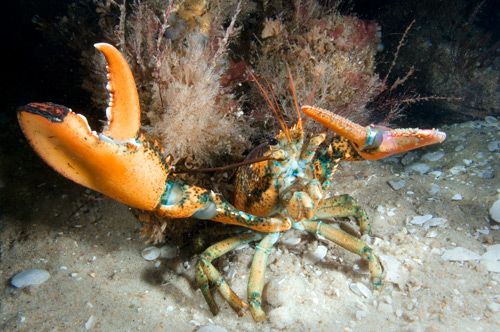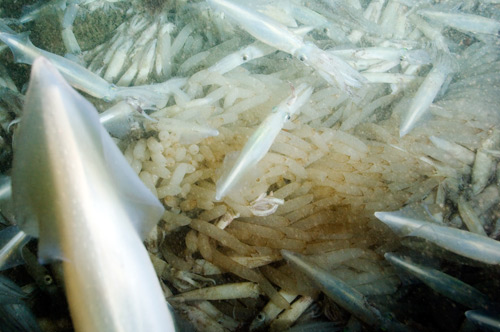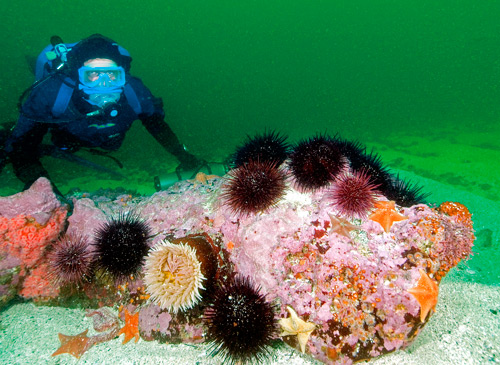Southern California Dives into Ocean Stewardship
By Jean-Michel Cousteau

Standing on the edge of a boat peering into the vast blue deep of the ocean is a thrilling – and sometimes intimidating—experience. My father “helped” me get over my nervousness by simply throwing me overboard at the age of 7 with the newly invented SCUBA tank on my back, but for folks without such assistance, you have to simply take a deep breath and make the plunge.
On December 15, 2010, southern California dove enthusiastically into ocean conservation when the Fish and Game Commission voted to adopt a network of underwater parks along the coast between Santa Barbara and the Mexican border. These Marine Protected Areas (MPAs) will join others in the statewide system of protected ocean waters called for in California’s Marine Life Protection Act.
This is truly an historic moment for all those who cherish southern California’s iconic coastal waters. The ocean belongs to all of us, and I hope you will join me in applauding this important step toward using smart, science-based management of our blue backyard.
We can all be proud of this legacy of ocean conservation. I founded the Ocean Futures Society to carry on the philosophy of my late father, Jacques Cousteau, and to continue to serve as a “Voice for the Ocean.” Today that voice was heard loud and clear.

I’m encouraged to see our leaders being more proactive in ensuring our priceless wild places remain healthy. The wild ocean is a place of wonder and discovery, where people young and old can find inspiration. We Cousteau’s are famous for many “firsts,” including donning the first SCUBA equipment and producing documentaries about the rich undersea world and our vital connection to a healthy, thriving marine ecosystem. As the first state with a coast-wide network of science-based protections, California should be proud of its own famous first. California’s new underwater parks will protect biodiversity hot spots so future generations can experience their beauty and richness. As Commissioner Rogers said at the meeting of the Fish and Game Commission, the ocean has changed significantly from 50 years ago. And this is our opportunity to turn the tide and set things right.
As for southern California, the future is bright. The new marine parks plan will be good for people and for sea life. To those who worry about lost fishing grounds, I say: there can be no fishing without fish. Marine Protected Areas protect the future of your business. I am on your side; I enjoy the bounty of the sea when it is properly managed sustainably for future generations.
It is ironic that the depletion of our ocean resources has accelerated at the same time we were personally donning dive masks and witnessing the richness of the ocean first hand. Just as we started to dignify and appreciate the ecological role of individual marine species and how they contribute to the sustainability of the marine ecosystem they call home, we were improving our fishing technology to remove them faster than they were replenishing their populations. From an ecological standpoint, we now understand how everything is connected. We now appreciate the need to set aside protected areas in the ocean just as we have done on land. But we are over a hundred years behind terrestrial conservation measures when it comes to protecting our marine assets. We protect over 14 percent of our land and less than 1 percent of the ocean. It is time to demonstrate the same stewardship for the ocean and recognize the importance of marine protected areas as a way to increase abundance, improve biodiversity and provide a nursery for species that will spill over into areas open to fishing. It is a win-win situation for us all.

The more I learn about the ocean, the more I realize how little I truly understand it. Even after all these years, a sense of exploration and wonder still fills me each time I dive into the ocean’s depths.
We owe it to ourselves – we owe it to our water planet – to set aside these crown jewels for us all to benefit from and to enjoy today and for all future generations.
I have come to appreciate these crown jewels around the world having dived Marine World Heritage sites and MPAs. One of my favorite sites is found in my own backyard – the Channel Islands National Park and Channel Islands National Marine Sanctuary. It is where I went diving for the first time after the death of my father in 1997. I was fortunate to experience an area off Anacapa Island safeguarded as a Marine Protected Area since 1980. I was on a dive boat from Santa Barbara along with 40 other divers, participating in NOAA’s Great American Fish Count. Because the death of my father was international news most of the divers knew I was going through a difficult time, having just laid my father to rest. Politely, I asked them if I might have a moment of peace underwater before they commenced their dives. What I was so fortunate to experience was not only the sun’s rays penetrating through kelp forest, but the thrill of diving through this three-dimensional forests so full of life. There, species included many large, desirable harvestable animals such as lobster, abalone and kelp bass. These are among many species that have become increasingly rare in other places along the California coast.
From my recently published book: My Father the Captain: My Life with Jacques Cousteau, I recall this memorable dive:
“I notice an unusual opening in the kelp. All around, there is this dense and marvelous kelp forest, which appears to collect around a silky, sandy bottom. The way it appears before me, at just that moment, is almost otherworldly. The sun’s rays are shining brightly through the kelp, lighting up this little, inexplicable patch of sand – like a spotlight on an empty stage. All around me there are tiny garibaldi, brightly coloured damselfish native to the area. In normal light, they’re a fantastic, shimmering orange, but here in this bright sunlight, they are like festive candles, a string of party decorations announcing some underwater fiesta. What can I do but follow these playful, carrot-coloured fish to the sandy bottom? What can I do but give myself over to their sweet allure? I drop to my knees and fall on the spot and I am overcome with emotion. It is almost mystical. I have been thinking of my father, of course, and now it feels as if he is here with me, on this sun-splashed ocean floor. For the first time since his death, he is near.”
Congratulations to California, my father would be proud for this impressive step forward in ensuring a healthy, productive ocean to study and explore far into the future.
Leave a Comment







